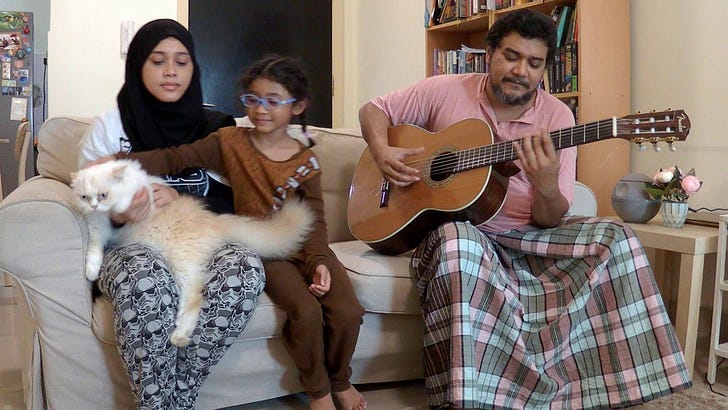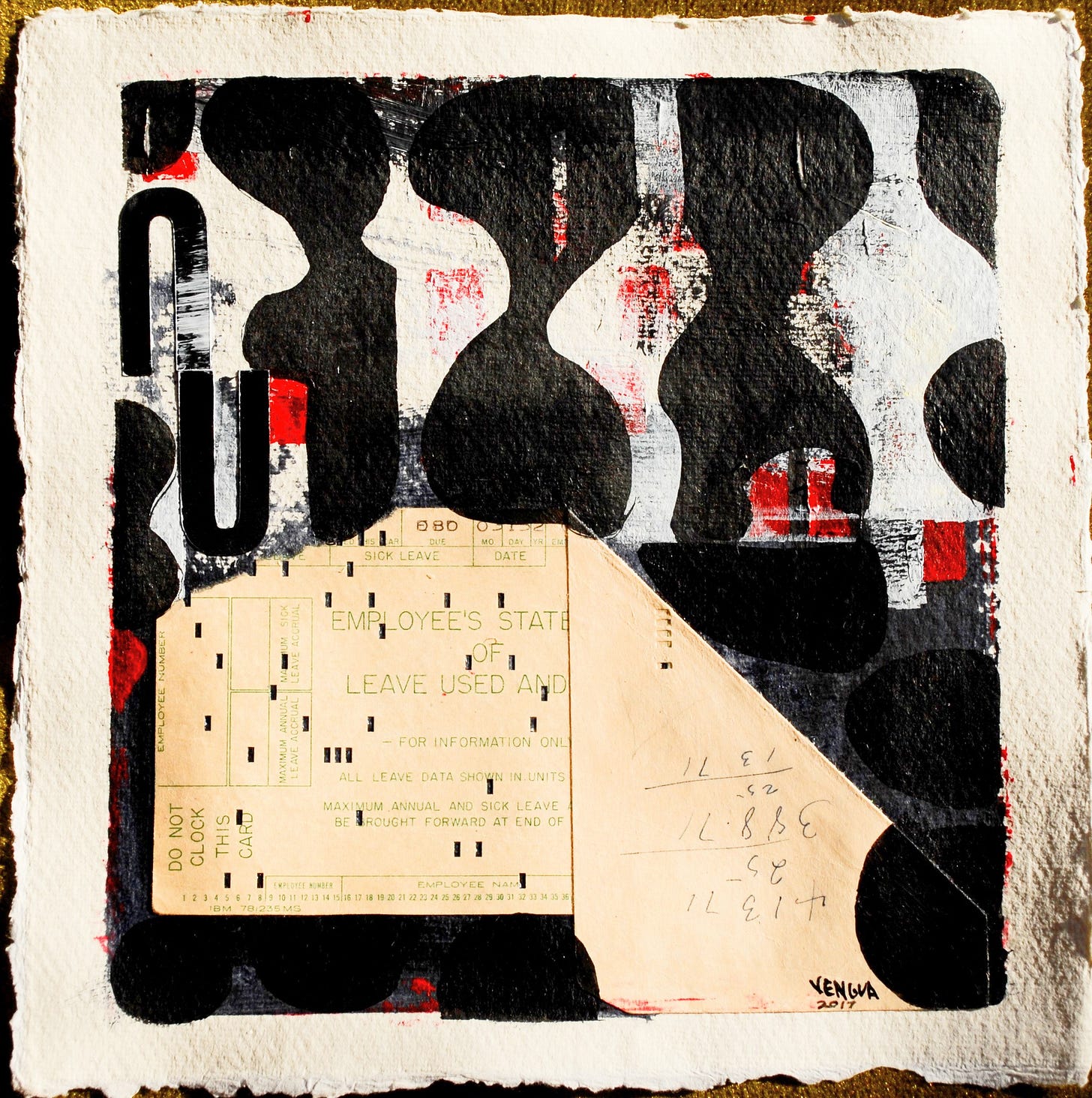After the “high” (almost) of the election, I’m suffering a bit from post-election, post-insurrection, waiting-for-the-vaccine blues. As a result, I haven’t been making much art over the last two or three weeks. It’s partly because of work—I freelance as a copy editor—and lengthy hours staring at the screen, looking for errors in APA citations tend to blunt my interest/energy in the creative process. But that hasn’t necessarily stopped me before. So I do think it’s “the blues.” At times like this it’s very easy to put off writing things like this newsletter, but I am absolutely committed to getting this thing out, so here I am, late Friday night (after midnight—it’s still Friday somewhere, right?), at my keyboard. And I’m wingin’ it.
And to go with the blues theme, here are the Gombak Hillbillies (and cat) with the “Covid-19 Blues” (do check out the lyrics that are available on YouTube with the video — they’re great, and so are the chorus singers). This put a smile on my face:
Covid-19 (Covid-19),
You dirty protein
You got me locked at home fussin’ over my hygiene…
Excerpt from “Covid 19” by Gombak Hillbillies
Just because I’m not making art, doesn’t mean I’m not thinking about it. This quote from artist Salman Toor for example, has me pondering the lives of my parents, the paper trail they’ve left behind (both of them having passed away), and how I might incorporate some of their history into my art:
Thinking of the encounter of immigration. An allegorical waiting space, a meditative state in which identities must be reduced to their simplest form. The poetic possibilities of this encounter, the diversity of types of people. Familiarity and otherness. -- Salman Toor
I have all these papers and ephemera from my parents’ life together / apart. And I’m wondering what to do with it. My parents came together because of war; my dad landed in Manila, where he met my mom, during WWII. They were pulled apart because of work; there has been a long-standing tradition/necessity of overseas work done by Filipinos, where the Philippines has gradually over the years gone from being a society that navigated and thrived on sea trade, to being a society that brokers its low-paid and sometimes abused workers to more fortunate countries, so those workers (called OFWs) can send money to the Philippines (over $30 billion in 2019, according to Nikkei Asia) and provide a better income for their families at home. My mom married my father, and moved to San Francisco with him—but he worked as a seaman for the merchant marines for many years, so I saw him only a couple times a year for a few weeks at a time. There was a time when my mother’s life seemed to hinge on letters from overseas—not just from my dad, but from her large family, who lived far away in the Philippines.
So many letters. I still have them, boxed in storage. Not only personal letters, but work documents, tax documents, immigration papers, passports, and more.
I like working with collage, that “meditative” process of gathering and arranging fragments of lives, of employment, wages sent home, and movement from one place to another. If immigration and work have become ways in which identities of human beings are “reduced to their simplest form,” how can art—writing, music, visual art, etc.— reveal the complexity of these lives?
At the same time, collage work often feels very personal. For example, I made a small collage, “Do Not Clock This Card” on handmade paper, incorporating an old punch card used by father at work during the 1960s. When it was purchased at a local art event I unexpectedly felt a pang of loss, suddenly realizing that part of my father’s life was going off to a stranger’s home.
I have a lot of other items left from him, so perhaps in the future I can more carefully choose what I want to retain, yet at the same time such “stories” that art can represent are not wholly my own; they may speak to others, too. What “poetic possibility” did the purchaser of that work encounter? If you write or create art, how do you feel about putting personal details/ephemera out there to share with the world?
Substack has these handy “Comment” and “Share” buttons, so I’m trying them out. :-)
Found online:
Deborah Roberts makes large scale collages that focuses black children, especially girls. In her artist’s statement she writes:
“Whether I was aware of it or not, otherness has been at the center of my consciousness since the beginning of my artistic career. My early ideals of race and beauty were shaped by and linked through paintings of renaissance artists and photographs in fashion magazines. Those images were mythical, heroic, beautiful, and powerful and embodied a particular status that was not afforded equally to anyone I knew. Those images influenced the way I viewed myself and other African Americans, which led me to investigate the way our identities have been imagined and shaped by societal interpretations of beauty.”
Check out this article about Deborah Roberts’ January 2021 show in Austin.
Just found the Asian-Canadian Observer newsletter by Marites (Tess) Sison; it’s also a Substack newsletter. See her article, “Love, Peace, and Adobo Grease” featuring a poem from my friend and writer/activist Leny Mendoza-Strobel, “The Power of Adobo.”
Finally, Impeachment Manager Representative Jamie Raskin quoted Voltaire at the Trump impeachment trial:
Anyone who can make you believe absurdities can make you commit atrocities.
—Voltaire




